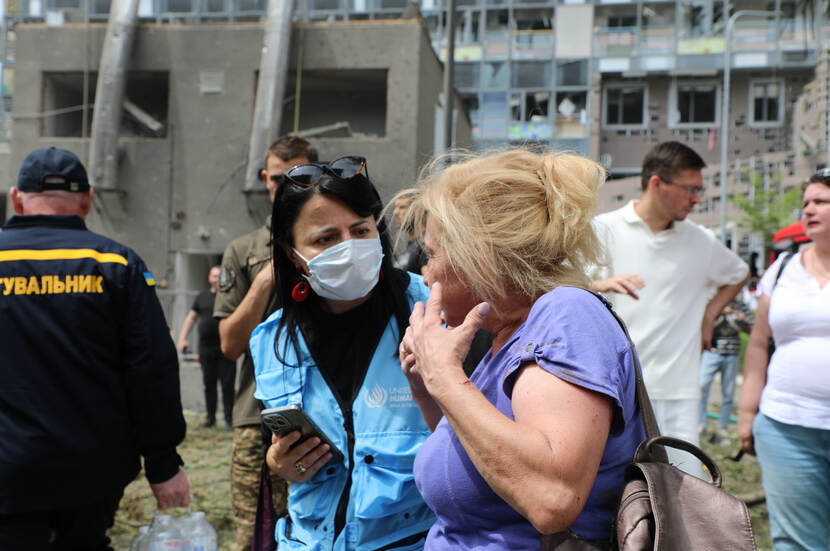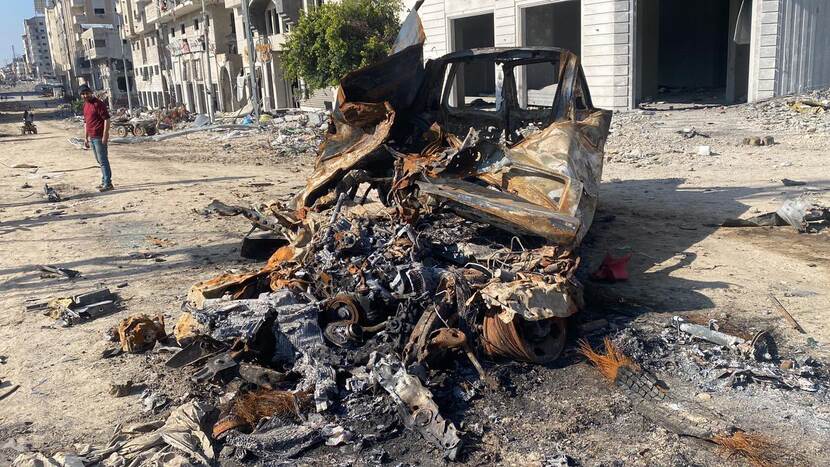World Humanitarian Day: no life-saving aid without humanitarian safety
Weblogs
Humanitarian workers are increasingly being targeted in violent attacks. This has to stop. Humanitarian workers must be able to carry out their work in safety in order to provide assistance effectively to those in need. The Netherlands is therefore committed to protecting aid workers and preventing those who attack them from going unpunished. This is why we support organisations like the Red Cross and the International NGO Safety Organisation through financial contributions.
19 August is World Humanitarian Day. On this day, we honour humanitarian workers, underscore the importance of their safety and reaffirm the international agreements we have made to safeguard this.
Deadliest year ever
Wherever disaster strikes or war or conflict erupts, humanitarian workers step in. They often work under extremely high pressure and in dangerous conditions. It’s essential that they can work unhindered and in safety in order to help people in need as quickly as possible. But attacks on humanitarian workers are becoming more frequent.
In 2024, 383 aid workers lost their lives while carrying out their work, according to the Aid Worker Security Database. It was the deadliest year ever. The number of humanitarian workers who were wounded, taken prisoner or abducted also increased in 2024. ‘Worldwide, we’re seeing less acceptance of humanitarian work,’ says Anthony Neal of the International NGO Safety Organisation (INSO), which is committed to the safety of humanitarian workers. ‘Targeted attacks on aid workers are happening more often, in different contexts. We’re also increasingly restricted as to where and how we can do our work. So it’s becoming more and more difficult to deliver aid and reach people in need.’
Derk Segaar, Head of International Aid at the Dutch Red Cross, says that humanitarian workers are increasingly concerned about their safety. ‘Some of the aid workers I’ve talked to have been doing this job for thirty years and for the first time they no longer feel protected by the Red Cross emblem. Instead, they feel like a target. That is incredibly alarming.’
International humanitarian law
Protection of civilians and humanitarian workers has its statutory basis in international humanitarian law. This also contains agreements on unhindered access to emergency aid and the protection of prisoners and the wounded. The most important parts of international humanitarian law are enshrined in the four Geneva Conventions and Additional Protocols.
‘International humanitarian law is about compassion in times of conflict,’ Derk explains. ‘Civilians must always be protected. Aid workers may never be targets and they must be allowed to provide the basic essentials to people in need. Yet these principles are being ignored in an increasing number of conflicts.’
The Netherlands attaches great importance to these international conventions and believes violations of international humanitarian law. Civilians and aid workers must never be targets.
Local victims
Most victims of attacks are local aid volunteers and employees who, despite growing risks, do their best to help people in need. ‘Around 90% of all humanitarian workers are active in their own communities,’ Anthony says. ‘In Gaza, Ukraine and every other place that is the scene of a humanitarian crisis, aid workers try day and night to help people.’
Most Red Cross aid workers, too, are local staff and volunteers working in their own communities. ‘It takes a great deal of courage to live and work in an area where there are explosions and where the fighting is ongoing,’ says Derk. ‘Local aid workers know what’s needed and are usually familiar with local cultures and customs. Their work can make a huge difference for people struggling to survive.’
Protecting humanitarian workers
To ensure that humanitarian workers can do their work as safely as possible, INSO provides NGOs with information on the current safety situation. NGOs themselves can also safely and anonymously share information on incidents through INSO and thus warn others. ‘It might be about a certain road, for instance, where aid workers have been attacked,’ Anthony explains. ‘We can communicate that an incident occurred without sharing confidential information. So other NGOs can decide whether to risk using that road today.’
Using all the data it collects, INSO is also identifying trends that can help NGOs adapt to local risks. ‘In this way we don’t just respond to situations, but can also actively give advice. For example, if analysis shows that NGO vehicles are often attacked in a certain region, we can advise the organisations to stop using their hallmark white trucks for a while, as they’re so easy to identify.’
INSO also coordinates sharing of safety-related experiences and problems among NGOs, and provides training for NGO staff. ‘We don’t just want to provide information and advice, but also teach organisations how they can use it,’ says Anthony. ‘Together we seek answers to problems like, how to ensure your workers’ personal safety, and how to respond in times of crisis.’
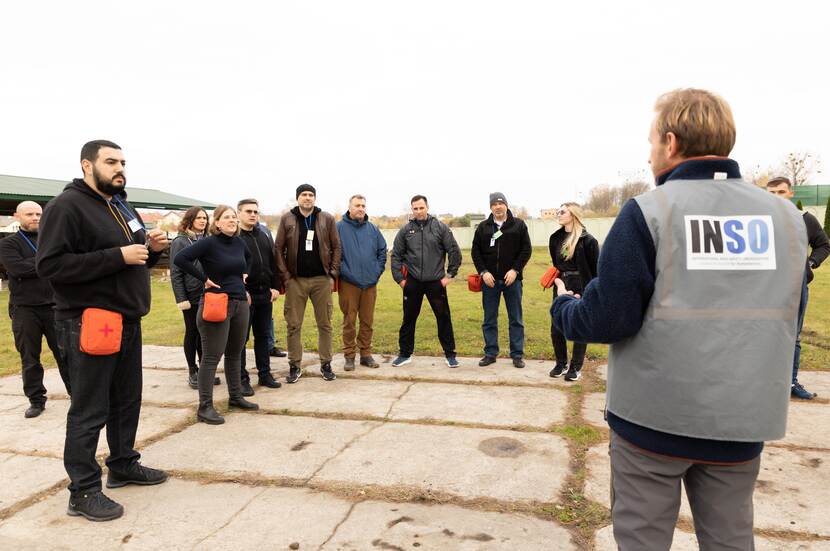
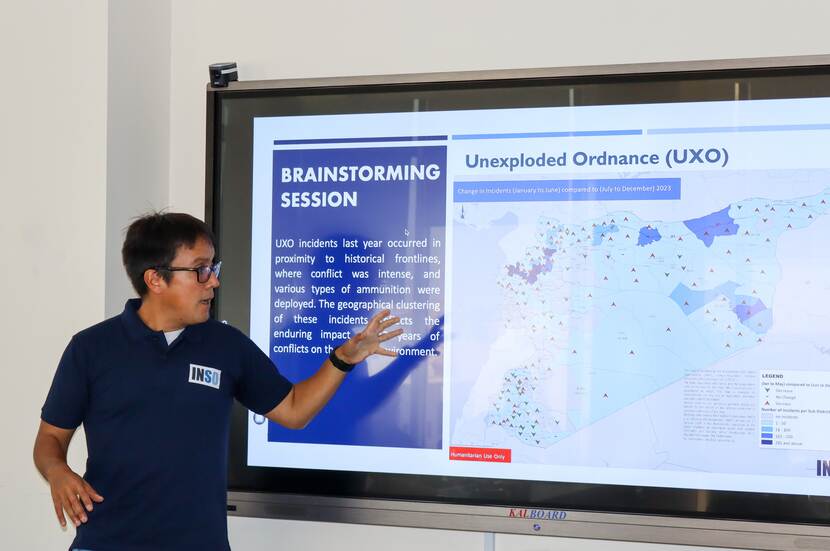
Accepting risks
The Red Cross is also taking various measures to make the work as safe as possible. These include not only physical protection, like bullet-resistant vests, helmets and access to safe shelters, but also safety protocols. ‘For example, we never travel at night,’ Derk explains, ‘and we always give the warring parties advance notice that we’ll be travelling from A to B, and give them the reason why. There can then be no misunderstandings.’
But humanitarian work can never be completely risk-free. ‘In the past few years, there have been an increasing number of situations where we’ve accepted greater risks than we’d like,’ says Derk. ‘As an organisation, we weigh up the risks, but there’s often no other option because the situation is so desperate and civilians are totally dependent on humanitarian aid to survive.’
Derk cites examples from South Sudan, Ukraine and Gaza. ‘In the southwest of Gaza we have a field hospital made up of nothing more than tents and plastic sheeting because we’re not allowed to bring protective materials into the area. An explosion or stray bullet rips straight through. We can barely provide our doctors there with any physical protection, but their work is absolutely vital.’
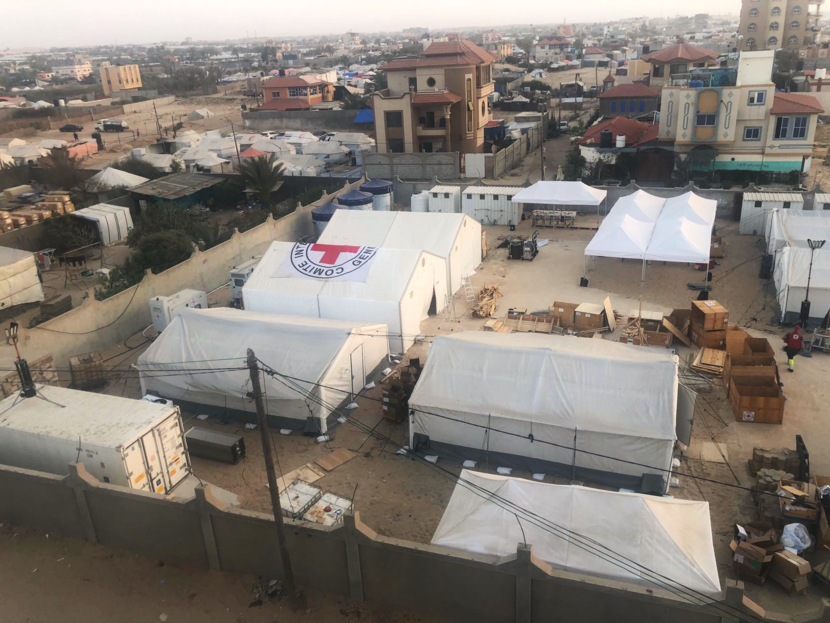
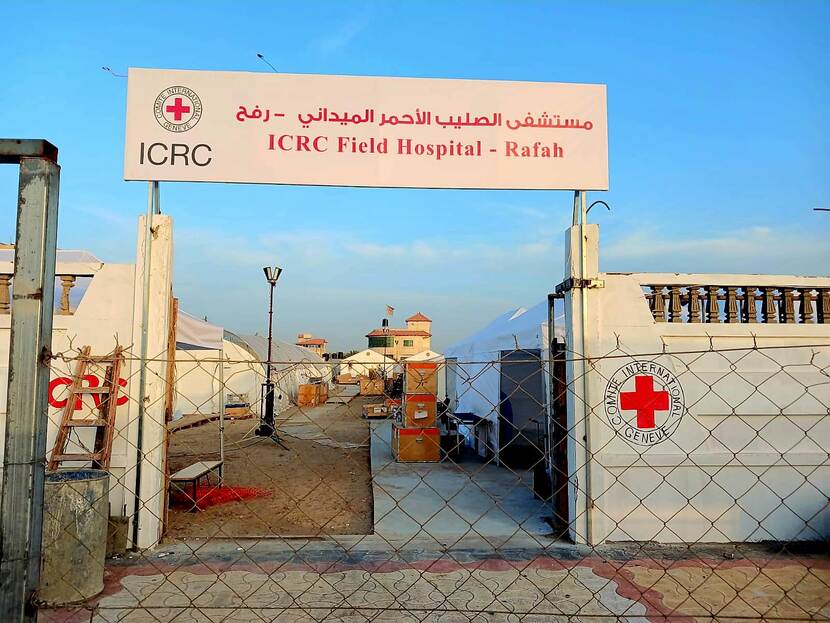
Independent investigation
Attacks on aid workers are often difficult to prove, so perpetrators usually go unpunished. ‘There’s rarely an independent investigation,’ says Derk. ‘The Red Cross can’t resolve this situation itself. That’s why we call on governments to take warring parties to task on the moral and statutory obligations under the international humanitarian law.’
Anthony too regards enforcement of international humanitarian law as the best way to protect humanitarian workers. ‘We need to renounce the culture of impunity we’re increasingly seeing when aid workers are attacked. The perpetrators must be held responsible, and protection of civilians must be enforced through international law.’
Tackling impunity
For the Netherlands, these international agreements and the international rule of law are of the highest importance. Civilians and humanitarian workers should never be the targets of violence, and those who violate international humanitarian law should be brought to justice. For this reason, the Netherlands works with other EU countries and like-minded UN member states to tackle impunity and protect humanitarian workers. Among other things, we support investigations into war crimes in Ukraine and condemn attacks on aid workers. The Netherlands also initiated a UN Security Council Resolution condemning the use of starvation of civilians as a method of warfare.
Wide-ranging humanitarian aid effortMillions of people all over the world are in need or displaced. They require immediate help to survive and rebuild their lives. For this reason, the Netherlands supports the work of the International Red Cross and UN aid organisations like UNICEF and the World Food Programme. This funding can be used to rapidly provide aid where it is needed most urgently. It is long-term and predictable, and not tied to specific themes or target groups. The Netherlands also contributes to the EU’s international humanitarian aid programmes. Click here for more information on the Netherlands’ humanitarian aid efforts. |
